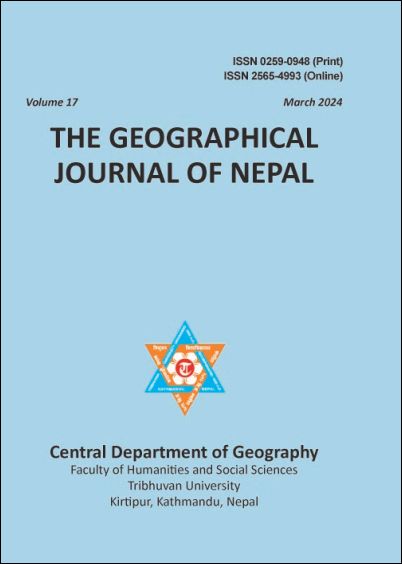Landslide susceptibility mapping of the main boundary thrust region in Thungsingdanda-Bandipur section of Nawalparasi and Palpa Districts, Gandaki and Lumbini Provinces, Nepal
DOI:
https://doi.org/10.3126/gjn.v17i01.63934Keywords:
landslide susceptibility, frequency ratio, geology, NepalAbstract
This research assesses the results of a landslide susceptibility analysis employing frequency ratios (FR). It was conducted in collaboration between CNES/Airbus and Maxar Technologies using Google Earth. Landslides in the Thungsingdanda-Bandipur area were identified through imagery with a 50 cm spatial resolution. A comprehensive dataset for training and testing was established based on the landslide inventory. Nine causative variables: slope, aspect, relief, distance from the stream, distance from the road, curvature, distance from the thrust, geology, and land use were used. FR ratings were assigned to these causative variables based on training events. The resultant landslide susceptibility map was generated by integrating causative variables with their respective FR ratings. The validation rate, determined using the ROC-AUC curve, was found to be 82.2 percent. Notably, distance from the thrust (MBT), land use, and distance from the road emerged as the more influential factors among the nine causative variables in landslide occurrences.
Downloads
Downloads
Published
How to Cite
Issue
Section
License
Copyright (c) 2024 The Author(s)

This work is licensed under a Creative Commons Attribution 4.0 International License.
© Authors




